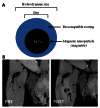In vivo imaging techniques: a new era for histochemical analysis
- PMID: 28076937
- PMCID: PMC5159782
- DOI: 10.4081/ejh.2016.2725
In vivo imaging techniques: a new era for histochemical analysis
Abstract
In vivo imaging techniques can be integrated with classical histochemistry to create an actual histochemistry of water. In particular, Magnetic Resonance Imaging (MRI), an imaging technique primarily used as diagnostic tool in clinical/preclinical research, has excellent anatomical resolution, unlimited penetration depth and intrinsic soft tissue contrast. Thanks to the technological development, MRI is not only capable to provide morphological information but also and more interestingly functional, biophysical and molecular. In this paper we describe the main features of several advanced imaging techniques, such as MRI microscopy, Magnetic Resonance Spectroscopy, functional MRI, Diffusion Tensor Imaging and MRI with contrast agent as a useful support to classical histochemistry.
Conflict of interest statement
The authors declare that they have no conflict of interest.
Figures




References
-
- Medhi B, Misra S, Avti PK, Kumar P, Kumar H, Singh B. Role of neuroimaging in drug development. Rev Neurosci 2014;25:663-73. - PubMed
-
- Mansfield P. MRI imaging in biomedicine. Advances in magnetic resonance. Academic Press, New York: 1982.
-
- Callaghan PC. Principles of nuclear magnetic resonance microscopy. Clarendon Press, Oxford: 1993.
-
- Blackband SJ, Buckley DL, Bui JD, Phillips MI. NMR microscopy—beginnings and new directions. Magn Reson Mater Phy 1999;9:112-6. - PubMed
Publication types
MeSH terms
LinkOut - more resources
Full Text Sources
Other Literature Sources
Medical

